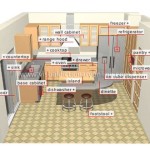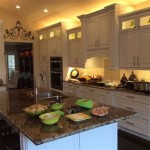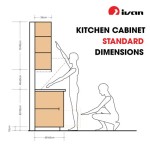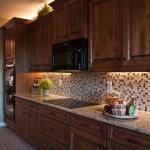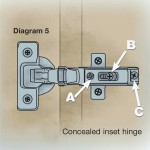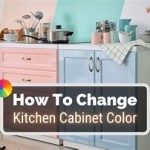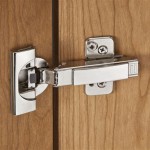Hinges for Kitchen Cabinets: A Comprehensive Guide
Kitchen cabinets rely heavily on hinges for both functionality and aesthetics. Choosing the right hinge can significantly impact the cabinet's lifespan and the overall kitchen experience. This guide provides a comprehensive overview of kitchen cabinet hinges, covering various types, materials, and installation considerations.
Types of Kitchen Cabinet Hinges
Understanding the different types of hinges available is crucial for making informed decisions. Each type offers unique functionalities and suits specific cabinet styles.
- Concealed Hinges (European Hinges): These are the most common type found in modern kitchens. They are fully hidden when the cabinet door is closed, offering a clean, streamlined look. They are also highly adjustable, allowing for precise door alignment.
- Semi-Concealed Hinges (Partial Wrap Hinges): These hinges are partially visible when the cabinet door is closed, and a small portion of the hinge remains exposed. They are a good option for frameless cabinets and offer easy installation.
- Surface Mount Hinges (Butt Hinges): These traditional hinges are fully visible when the cabinet door is closed. They are easy to install and offer a classic, rustic appearance. They are commonly used for overlay cabinet doors.
- Inset Hinges: Designed for inset cabinet doors, these hinges are mortised into both the door and the cabinet frame. They provide a flush, seamless look when the door is closed.
- Specialty Hinges: This category encompasses various hinges designed for specific purposes, such as soft-close hinges, self-closing hinges, and corner hinges for blind corner cabinets.
Hinge Materials and Finishes
Hinge materials impact durability, corrosion resistance, and overall aesthetics. Finishes provide a protective layer and enhance the hinge's appearance.
- Steel: The most common hinge material, steel offers excellent strength and durability. It is often plated with nickel, brass, or chrome for corrosion resistance and aesthetic appeal.
- Stainless Steel: Highly resistant to rust and corrosion, stainless steel hinges are ideal for humid environments. They offer a premium look and long-lasting performance.
- Brass: Brass hinges offer a classic, elegant appearance. They are durable and corrosion-resistant, although they may require occasional polishing to maintain their shine.
Understanding Hinge Overlay
Overlay refers to how the cabinet door overlaps the cabinet frame. Choosing the correct hinge type depends on the overlay style.
- Full Overlay: The cabinet door completely covers the cabinet frame. Concealed hinges are typically used for full overlay cabinets.
- Partial Overlay: The cabinet door partially covers the cabinet frame. Semi-concealed hinges are often used for partial overlay cabinets.
- Inset: The cabinet door sits flush with the cabinet frame. Inset hinges are specifically designed for this application.
Measuring for Hinges
Accurate measurements are critical for proper hinge installation and cabinet door alignment.
- Corner Radius: Measure the radius of the cabinet door's corner. This measurement is essential for selecting compatible concealed hinges.
- Overlay: Determine the overlay of the cabinet door to choose the appropriate hinge type.
- Door Thickness: Measure the thickness of the cabinet door to ensure the hinge can accommodate it.
Installing Kitchen Cabinet Hinges
Proper installation ensures smooth door operation and prevents premature wear and tear. While specific installation steps vary depending on the hinge type, some general guidelines apply.
- Mark Hinge Locations: Carefully mark the locations for the hinge plates on both the cabinet door and the cabinet frame.
- Drill Pilot Holes: Drill pilot holes to prevent wood splitting and ensure accurate screw placement.
- Attach Hinge Plates: Secure the hinge plates with appropriate screws.
- Adjust Door Alignment: Most concealed hinges offer adjustment screws for fine-tuning door alignment after installation.
Maintaining Kitchen Cabinet Hinges
Regular maintenance can extend the lifespan of cabinet hinges and ensure smooth operation.
- Lubrication: Periodically lubricate the hinges with a dry lubricant to prevent squeaking and ensure smooth movement.
- Cleaning: Clean the hinges regularly with a damp cloth to remove dirt and grime.
- Tighten Screws: Check and tighten hinge screws periodically to maintain a secure connection.
Choosing the Right Hinges for Your Kitchen
Selecting the appropriate hinges depends on various factors, including cabinet style, budget, and desired functionality.
- Cabinet Style: Consider the cabinet's overlay and overall design when choosing hinges.
- Budget: Hinge prices vary depending on the material, type, and features. Set a budget beforehand to narrow down your options.
- Functionality: Consider features like soft-close and self-closing mechanisms based on your preferences.

Kitchen Cabinet Door Hinges Pictures Options Tips Ideas

Liberty Matte Black Self Closing Overlay Cabinet Hinge 5 Pairs H0103bl Fb Sp The Home Depot

How To Adjust Your Kitchen Cabinet Hinges Solid Wood Cabinets Information Guides

Thomasville Specialty S Top Hinge Cabinets

The Ultimate Guide To Kitchen Cabinet Hinges

The 10 Types Of Hinges Every Diyer Needs To Know Inset Face Frame Cabinets

How To Install Overlay Kitchen Cabinet Hinges Roots Wings Furniture Llc

Types Of Cabinet Hinges The Home Depot

How To Install Overlay Kitchen Cabinet Hinges Roots Wings Furniture Llc

10 Best Cabinet Hinges For 2024 The Jerum Post
Related Posts

